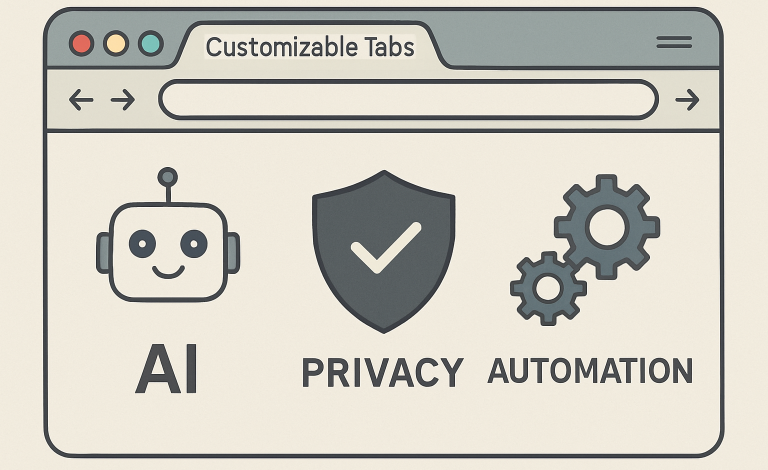Innovative Web Browsers Redefining the Internet Experience

Introduction
Web browsers have historically functioned merely as conduits to the sprawling information network of the Internet. Yet the digital environment is witnessing a decisive evolution, animated by a new class of browsers determined to redefine the user experience. Platforms like Shift Browser are part of a new vanguard of internet tools focused on streamlined multi-account management and enhanced workflow integration, illustrating the growing appetite for smarter, more customizable browser experiences.
Given the brisk advance of digital trends, decision-makers now enjoy a spectrum of options that extends well beyond legacy browsers such as Chrome and Firefox. Fresh competitors are now entering the arena, prioritizing privacy, automation, and granular personalization in ways that redefine user protection, engagement, and temporal efficiency.
Emergence of AI-Powered Browsers
Artificial Intelligence is rapidly becoming an essential feature in next-gen browsers, propelling the shift from static web navigation to dynamic, intelligent assistance. Among the most noteworthy is Perplexity AI’s Comet, which embeds generative AI to distill web pages into concise summaries, autonomously execute travel itineraries, and fluidly orchestrate intricate task sequences.
These new browsers, enriched with artificial intelligence, gauge user intentions and curate personalized pathways to information. By embedding conversational agents within their architectures, they shorten the distance to answers and invite richer interaction, taking on task management, furnishing context-sensitive recommendations, and evolving through sustained interaction to forge a uniquely tailored experience.
Focus on Privacy and Customization
Amid mounting apprehension about online privacy, several formative browsers have pledged to invert the conventional power dynamic, returning data agency to the user. Zen Browser, a transparent, community-driven fork of Firefox, offers a privacy-centric chassis augmented by vertical tab stacks, compartmentalized workspaces, and a spectrum of granular configuration controls, permitting users to sculpt a navigation realm shielded from surveillance and undesired tracking.
Unlike older platforms that make money by selling user data, these privacy-focused browsers offer features like secure syncing, blocking unwanted trackers, and being transparent about how they handle data. This evolution signals an accelerating appetite for browsing tools that enshrine digital security and user agency as inalienable, first-order principles.
Reimagining User Interfaces
The user interface of a browser can define its appeal and functionality. With the latest iteration of Opera Neon, the firm places the interface at the center of the user experience, replacing conventional layouts with a radically fluid framework. Floating tabs, an interactive visual start page, and tightly integrated AI assistants work together to transform the browser into an active partner for tasks ranging from code development to multimedia research and content generation. Neon thus raises the question of whether a browser can transcend passive navigation to become an intuitive productivity catalyst.
These redesigned experiences deliberately discard the hierarchies and affordances that have governed browser design for thirty years. Instead, they privilege seamless multitasking, embedded workflows, and contextually aware intent recognition. The effect is to facilitate page retrieval and create an augmented workspace where intelligent utilities and timely information coalesce around the user’s evolving goals.
Challenges to Established Dominance
Innovative entrants such as Neon, Arc, and Brave are gradually eroding the historic hegemony of Google Chrome. Competition no longer revolves around raw speed or standards compliance; newcomers foreground AI-driven automation, layered privacy architectures, and highly granular user profiling as signature differentiators.
This fracturing of the web browser landscape is also a bellwether for evolving consumer expectations. Users are increasingly ready to experiment with alternatives that promise tighter control and measurable efficiency gains. The diversification of the browser ecosystem guarantees that the pace of innovation will remain brisk, empowering users with a range of tailored experiences that the market has not previously offered.
Key Features of Emerging Browsers
AI Integration: The latest browser versions embed AI engines that automate repetitive actions, distill long articles into concise summaries, and surface contextual suggestions that align with user behavior.
Enhanced Privacy: Emerging browsers adopt expanded data safeguards, layering strict tracker filters with granular, user-definable privacy policies that govern data sharing and storage.
Customizable Interfaces: Users gain the ability to tailor the browser’s layout to their workflow, utilizing vertical tab displays, movable side panels, and compartmentalized workspaces that suit diverse project needs.
Task Automation: Sophisticated automation routines operate within the browser, coordinating actions such as email sorting, meeting note collation, and data set curation without needing third-party applications.
Implications for Users
This convergence of intelligent, privacy-centric, and customizable browsers invites users to reengineer their digital routines. Browsers evolve into anticipatory digital aides that learn preferences and unobtrusively streamline processes in research, content creation, or daily correspondence.
The result is a browsing experience of security, fluidity, and enjoyment. Digital friction abates, allowing cognitive space for high-priority tasks. The adaptive architecture appeals to casual and power users demanding granular control, marrying ease of use with advanced productivity features.
Looking Ahead
Web browsers are becoming more than a gateway to the Internet; they are now architecting the user experience. Enhanced artificial intelligence, an intensifying emphasis on privacy safeguards, and a readiness to overhaul the browsing model are converging to place browsers at the core of ongoing digital reinvention.
To anticipate these changing contours, consider Tom’s Guide’s analysis of OpenAI’s integrated browser and TechRadar’s comparative review of the Comet experience from Perplexity. Together, these examinations illuminate a future of web browsing that will be agile, privacy-oriented, and deeply attuned to users’ evolving needs.




